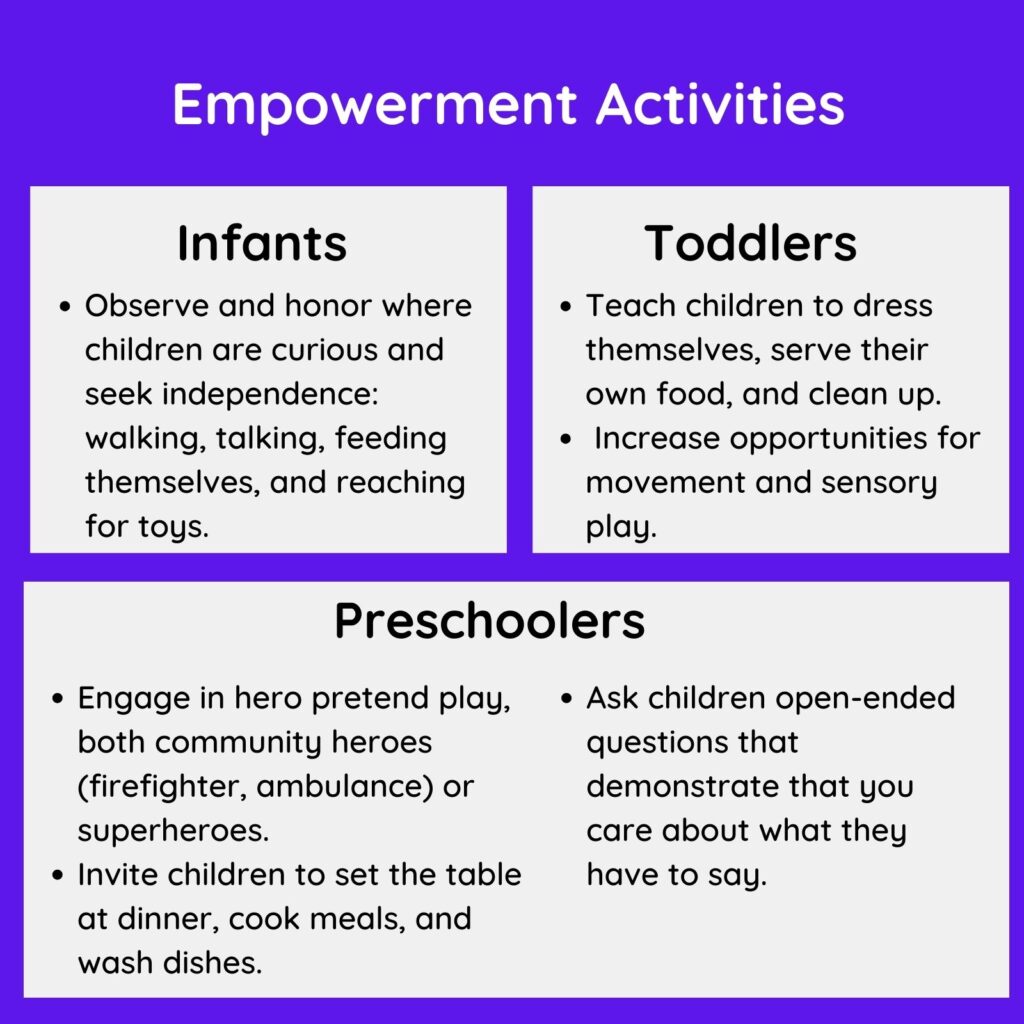
Empowering children is a social-emotional topic that is applicable in so many areas of children’s lives. For example, let’s think about the journey children take to learn how to walk: The child experiments with standing as they reach for the edge of a table, they take steps as a caregiver holds their hands and walks with them, they take independent steps and then fall, and they try, try again. We watch this journey and celebrate the children, as they develop the confidence and fearlessness it takes to become a bipedal human being! As caregivers we understand that we cannot walk for them, or always carry them around, and that children need to walk in order to build towards so many other skills in life. We are there to help them in the beginning, but also understand that their independent exploration is a crucial step in mastery.
So, how can we apply this to the rest of children’s lives? How can we find the loving balance between independence and assistance in order to empower children to be lifelong learners? To begin, throughout early childhood we can invite children to do things for themselves. Yes, it might be frustrating when learning how to use a spoon, pour our own milk, zip jackets, button buttons, and engage in other self-care skills, but ultimately children will figure it out and feel empowered by the process. We can show them where a towel is to clean up spilled milk, tricks for putting on a jacket upside down, and most importantly, we can be a loving presence as we encourage children to figure out daily challenges for themselves.
Another way that we can empower children is by demonstrating that we care about their needs and values. For example, we might have a child who is running around indoors, or splashing water in the bathroom–at the moment this might look like “misbehavior”, but in reality the child is demonstrating that he or she has a developmentally appropriate need for movement and sensory play. Thus, we can empower children by giving them lots of opportunities to meet their needs throughout the day, instead of having to constantly redirect them. For example, we can create a “Designated Digging Area”, “Bubble Foam” sensory bin, or a “Cleaning Dishes” station in our backyards to give children daily access to sensory play. For movement, we can spend the morning foraging for materials to make a “Forest Floor Sensory Bin”, so that children can incorporate movement naturally into an activity. This is one of the reasons why we try to incorporate nature-based learning into our weekly activities on the Rayz Kidz app.
Another way to empower children is through engaging in pretend play that allows children to demonstrate their understanding of feeling powerful. This could be through playing “Firefighter” with chalk and buckets of water outdoors, through wearing with a “DIY No Sew Toolbelt”, or by playing superheroes with our “Oobleck Rescue” sensory bin. In these scenarios, children get to see themselves in heroes, whether they are the pretend ones in movies or the real ones in our communities or households, that show us that if we work hard and keep trying, we can also feel empowered. Check out the Rayz Kidz app for our weekly activities that help you understand how to define and defend play in everyday life!
